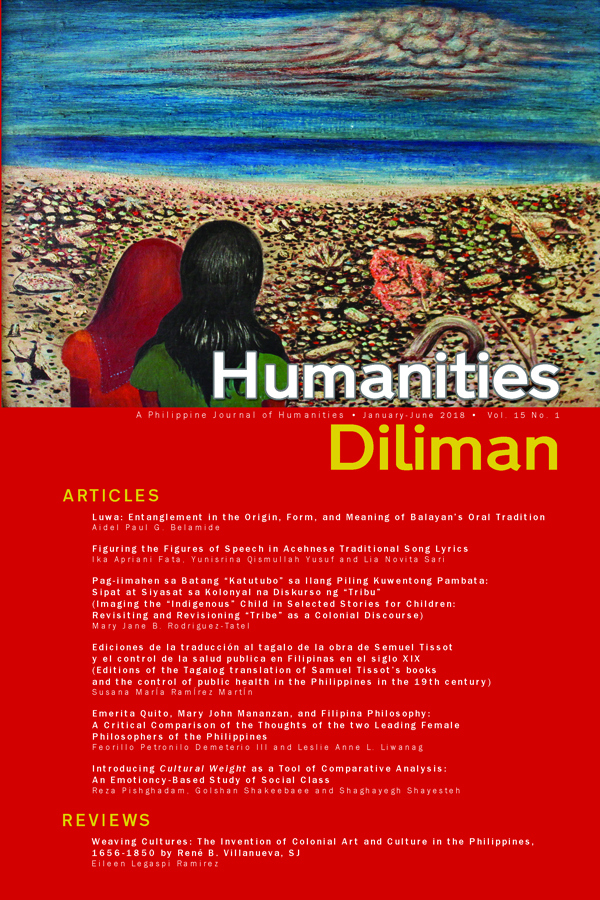Pag-iimahen sa Batang “Katutubo” sa Ilang Piling Kuwentong Pambata:<br>Sipat at Siyasat sa Kolonyal na Diskurso ng “Tribu”<br>(Imaging the “Indigenous” Child in Selected Stories for Children: <br>Revisiting and Revisioning “Tribe” as a Colonial Discourse)
Abstract
The term “tribu”/ “tribe” as a colonial construct has spawned a highly politicized understanding of differences among various ethnolinguistic groups in the Philippines. It was used both by the Spanish and American colonizers to create the image of the colonized as a disparate group of people unworthy of becoming a nation. It has also been used in the contemporary discourse among Filipinos as an apellation to ethnic groups who have been marginalized and minoritized on account of their resistance to the homogenizing “political, social and cultural inroads of colonization “ (Republic Act 8371). As the study probes into the nuances of “tribe” as it underwent the process of textualization and reproduction from the colonial to the post-colonial context, it aims to contribute to the emerging discourses in children’s literature as it intersects with the politics of representation and ethnicity. At this juncture, it may be asked: How does one make sense of “tribe” in the contemporary children’s literature, both as an ethnic category engendered by our colonial experience and as a discourse that generated certain images of the “indigenous”? Have the “colonial imaging and imaginings” been reproduced to perpetuate the prevailing notions of “physical isolation,” “backwardness,” “inferiority” and “savagery”? Or has “tribe” been redefined to provide a counter-image and challenge the status quo?
The study analyzes fifteen (15) stories for children that feature representations of indigenous children during the first decade of the present century. Two things are taken into account: textual and visual representations. The former necessitates a closer look into how the narratives either reinforce or contradict the dominant imaging of the so-called tribal children. On the other hand, the 58 Pag-iimahen sa Batang “Katutubo” sa Ilang Piling Kuwentong Pambata illustrations as paratext are treated as a site of transactions or even tensions between the reader and the author. All of these are deemed important to provide a more nuanced view of ethnic categories as an embattled terrain, a dynamic negotiation between the “Self” and the “Other”.
Keywords: Children’s literature, ethnicity, politics of representation, indigenous peoples
Sipat at Siyasat sa Kolonyal na Diskurso ng “Tribu”
(Imaging the “Indigenous” Child in Selected Stories for Children:
Revisiting and Revisioning “Tribe” as a Colonial Discourse). Humanities Diliman: A Philippine Journal of Humanities, [S.l.], v. 15, n. 1, july 2018. ISSN 2012-0788. Available at: <https://journals.upd.edu.ph/index.php/humanitiesdiliman/article/view/6241>. Date accessed: 01 sep. 2025.


